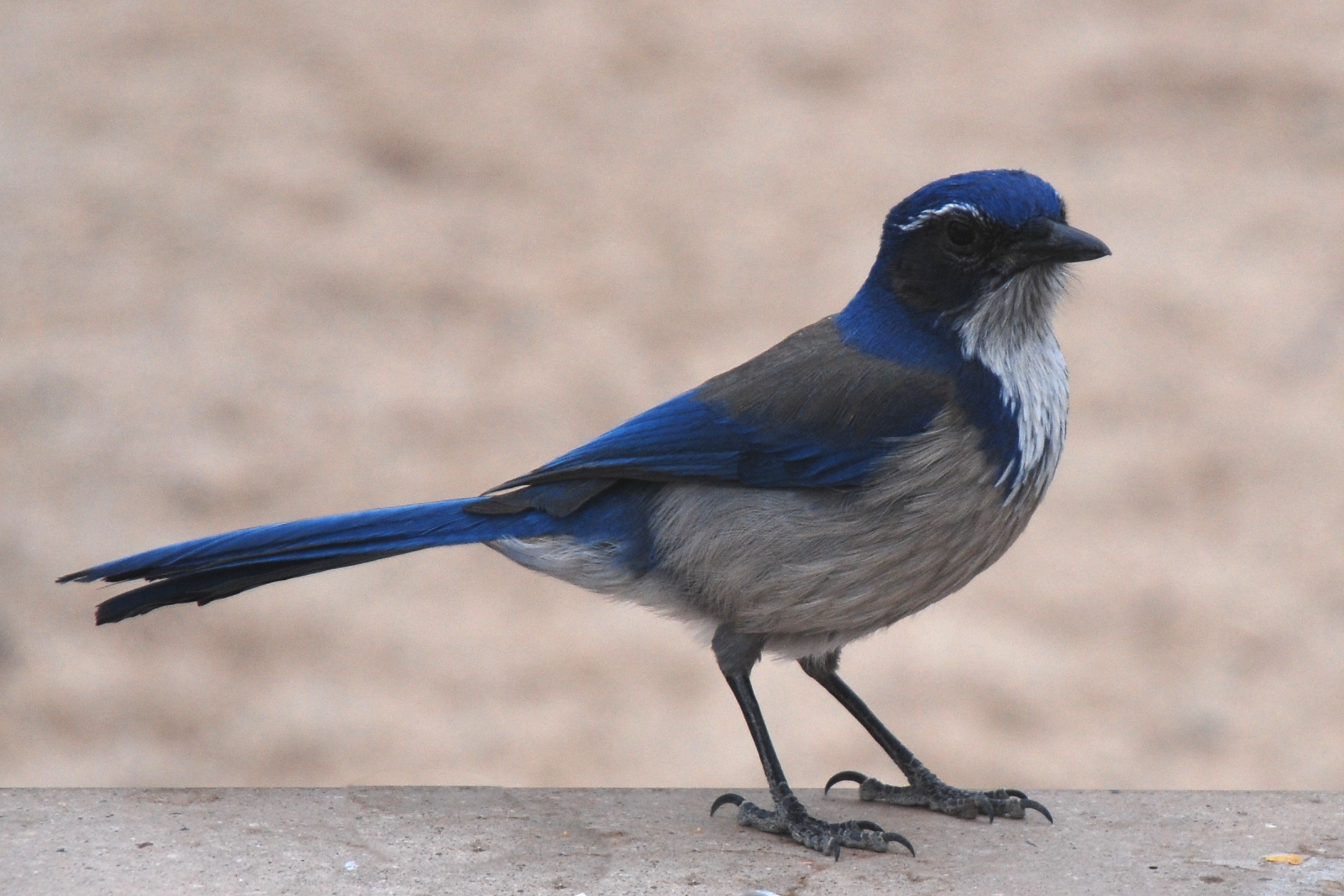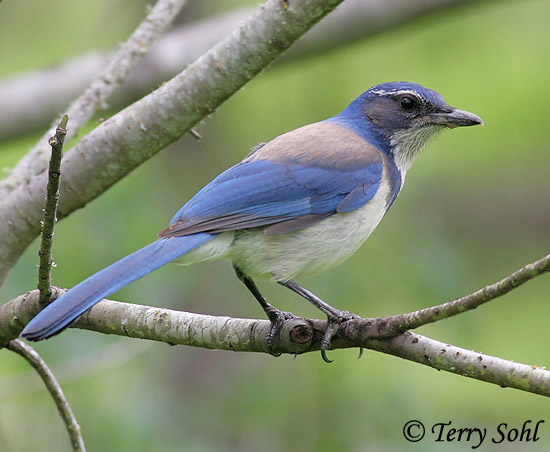
Aphelocoma californica
SUBFAMILY
Corvinae
TAXONOMY
Aphelocoma californica Vigors, 1839, California. Fifteen subspecies.
Isolated Florida scrub-jay in peninsular Florida and the
island scrub-jay (Aphelocoma insularis) on Santa Cruz considered
separate species.
OTHER COMMON NAMES
English: California jay; French: Geai buissonnier; German:
Buschhдher; Spanish: Chara Pecho Rayado.
PHYSICAL CHARACTERISTICS
10.53–12.09 in (27–31 cm); 2.8 oz (80 g). Upperparts, head,
wings, and tail are dark blue; mantle and back are grayish
brown. Head features a white “eyebrow” over a dark eye patch.
Underparts are variable whitish, buff, and grayish. White
throat is outlined with a blue necklace and there is a blue band
on the chest. Bill, legs, and feet are blackish.
DISTRIBUTION
Western United States and northwest Mexico.
HABITAT
Mixed shrubs with trees.
BEHAVIOR
Ground-feeder never far from cover, usually in pairs or family
groups. Frequent loud, chattering calls. Pairs are strongly
territorial.
FEEDING ECOLOGY AND DIET
Primarily acorns and pine seeds, often stored for later use. Also
invertebrates, eggs and nestlings, small amphibians, reptiles,
and mammals.
REPRODUCTIVE BIOLOGY
Solitary breeder. Lays two to six eggs late March through early
May in twig nest lined with plant matter. Incubation 16–19
days; fledging about 18 days.
CONSERVATION STATUS
Not threatened; locally common.
SIGNIFICANCE TO HUMANS
Important, if inadvertent role as a planter of trees.
Other popular Animals
Photo Gallery of - Western scrub-jay




 Animalia Life
Animalia Life